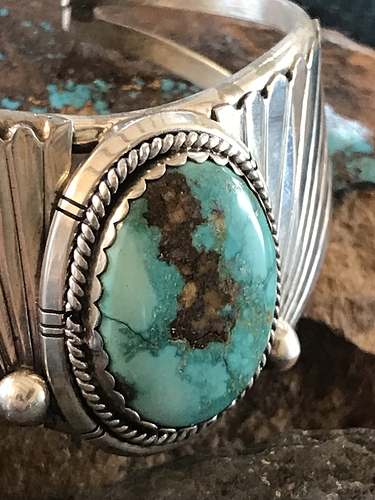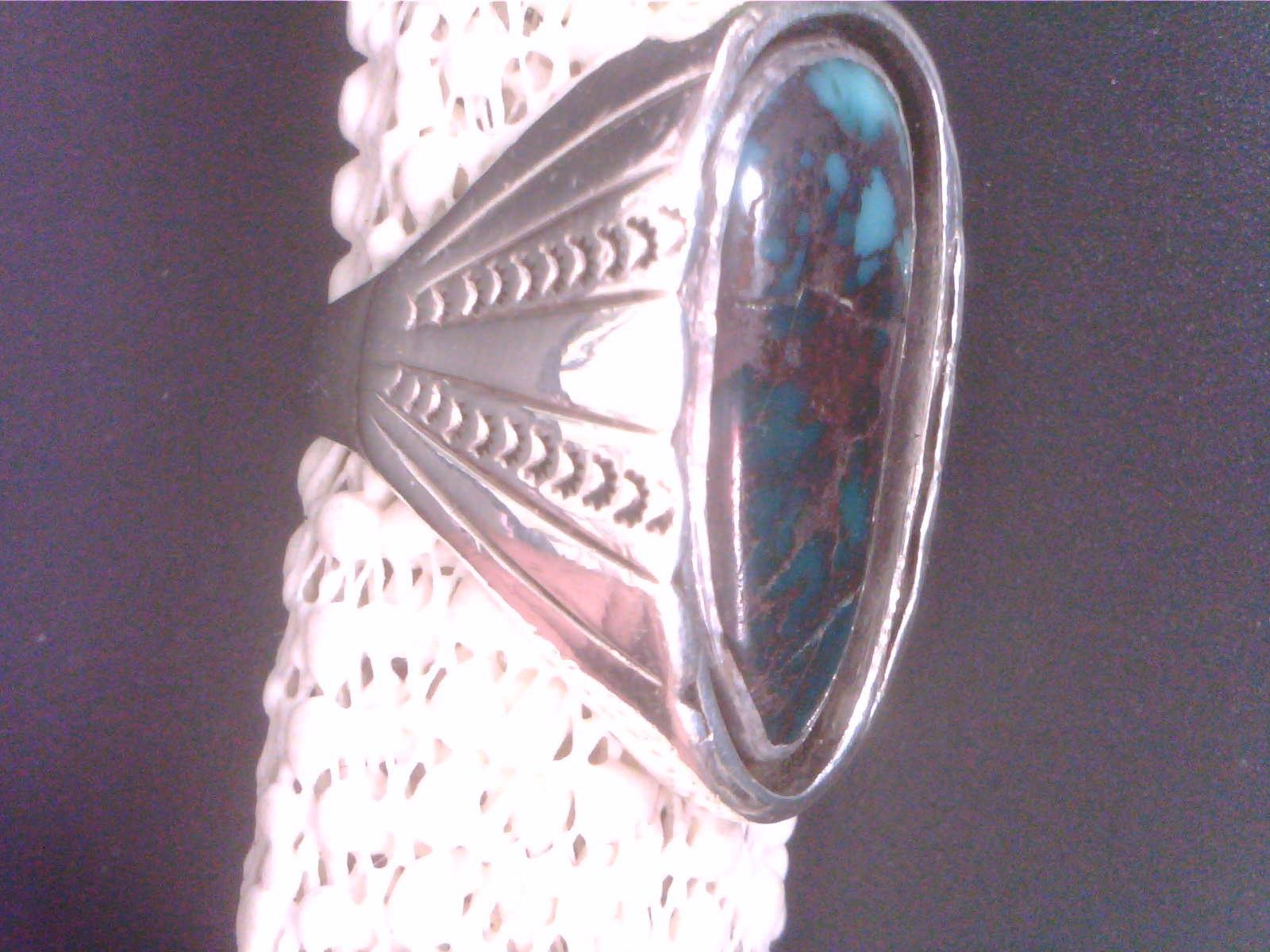Does anyone have an idea about the mine this pretty stone might have come from? Thanks much.
Not an answer to which mine, but I do note the stone is cracked, and not merely crazed. Perhaps stable, but cracked. If you’re considering buying this piece vs. it’s already in your collection, something to think about.
Thank you, Chic. Yes, I did notice the crack. I guess I thought it might not make a lot of difference if the crack was not all of the way across/through the stone. So I imagine the value would be substantially diminished because it might continue to crack? Too bad, it’s very pretty.
My experience says the crack won’t matter unless the pieces are loose. Picked up a Bisbee ring with the stone cracked across the width and was told it was worth about 12 times what I paid for it.
Oh, I see. On closer inspection it is cracked all of the way across the stone.
Hm. The stone is not loose. I am not sure what to think.
Certainly any turquoise stone value generally is harmed by a crack (outside the earliest Navajo bracelets maybe). Think of it this way: Without the crack in this Bisbee story, the value would be arguably 24 times more than what you paid.
A crack is not desirable. I shall look more closely before I consider buying.
I still wonder about the stone’s possible origin. It reminds me of Bisbee some given the brown matrix, but the color seems not quite Bisbee.
As it was explained to me by the expert I showed it to, the ring with this stone has a value yet if the stone were taken out and each part of it made into something else then it would be worth more than the original ring. The stone is cracked across about 1/3 of the way from the top. My point, however, was that the crack does not devalue this ring as it stands.
Have no fear there’s WATER CLEAR !! Hi Lin, If you are not worried about the historical value of the piece you can repair the stone in place. Here’s how. You can buy epoxy 330 water clear glue made for repairing gems and mounting gems. Or you can use watch crystal cement too. My favorite is superglue ! simply fill the void with glue and try to push the halves together. If using superglue watch out for overruns and don’t glue your fingers to the ring. Also do not use an accelerator to dry the superglue it can turn your stone white. Once the stone is set you may need to apply more to back fill until the glue is higher than your stone. Now the fun part. Once totally dry you need to sand off the excess glue until you have a smooth surface. For this use a set of fingernail buffing emery files. Use only the finest grits that won’t scratch the stone significantly and continue reducing the grit and buff just like someone buffs their nails. You may even find you want to buff the entire stone to restore its luster. Hope this helps, Kyle
If I may…if you’re going to try a superglue,keep some acetone handy. BEFORE you need it. 
I would buy it and have someone who specializes in Native jewelry do the superglue as suggested or similar type repair. Too pretty of a stone to change out.
Agreed. Thanks JW. The stone is actually to my eye prettier than the setting.
Thanks for the good instructions, Kyle. I may try this.
It’s really not as hard as it sounds. You could try a little sanding and buffing on a scrap piece…something no so important …till you feel like you have the hang of it.
Ok. I will likely try it. 
I have seen a few stones that look like this, reminds me of something like Easter Blue.
An example Natural Nevada Easter Blue Turquoise | Turquoise Direct
Jason, I see what you mean.


